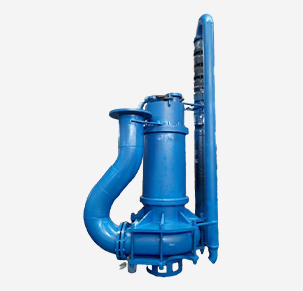Serbian
- Afrikaans
- Albanian
- Amharic
- Arabic
- Armenian
- Azerbaijani
- Basque
- Belarusian
- Bengali
- Bosnian
- Bulgarian
- Catalan
- Cebuano
- Corsican
- Croatian
- Czech
- Danish
- Dutch
- English
- Esperanto
- Estonian
- Finnish
- French
- Frisian
- Galician
- Georgian
- German
- Greek
- Gujarati
- Haitian Creole
- hausa
- hawaiian
- Hebrew
- Hindi
- Miao
- Hungarian
- Icelandic
- igbo
- Indonesian
- irish
- Italian
- Japanese
- Javanese
- Kannada
- kazakh
- Khmer
- Rwandese
- Korean
- Kurdish
- Kyrgyz
- Lao
- Latin
- Latvian
- Lithuanian
- Luxembourgish
- Macedonian
- Malgashi
- Malay
- Malayalam
- Maltese
- Maori
- Marathi
- Mongolian
- Myanmar
- Nepali
- Norwegian
- Norwegian
- Occitan
- Pashto
- Persian
- Polish
- Portuguese
- Punjabi
- Romanian
- Russian
- Samoan
- Scottish Gaelic
- Serbian
- Sesotho
- Shona
- Sindhi
- Sinhala
- Slovak
- Slovenian
- Somali
- Spanish
- Sundanese
- Swahili
- Swedish
- Tagalog
- Tajik
- Tamil
- Tatar
- Telugu
- Thai
- Turkish
- Turkmen
- Ukrainian
- Urdu
- Uighur
- Uzbek
- Vietnamese
- Welsh
- Bantu
- Yiddish
- Yoruba
- Zulu
Telephone: +86 13120555503
Email: frank@cypump.com
дец . 30, 2024 07:40 Back to list
Essential Guide to Replacing Your Septic Pump Efficiently and Effectively
Understanding Septic Pump Replacement A Comprehensive Guide
Septic systems are essential for homes not connected to a public sewer system. They safely treat and dispose of wastewater, ensuring that harmful substances do not contaminate groundwater. One critical component of these systems is the septic pump, which helps transport wastewater from the septic tank to the drain field. Over time, septic pumps can wear out and need to be replaced. This article will provide an overview of septic pump replacement, including signs of malfunction, the replacement process, and tips for maintenance.
Signs You Need a Septic Pump Replacement
Recognizing the signs that your septic pump needs replacement is crucial for preventing costly repairs and health hazards. Here are some indicators
1. Frequent Repairs If you find yourself frequently repairing your septic pump, it may be time for a replacement. Continuous breakdowns could indicate that the pump is reaching the end of its lifespan.
2. Strange Noises An unusual humming, grinding, or gurgling noise from the pump can signal that it is struggling to operate efficiently. This malfunction could lead to a complete failure if not addressed promptly.
3. Odor Problems Foul odors around your pump location can indicate a problem. This odor often means that wastewater is not being effectively pumped out, leading to backups.
4. Slow Drains If sinks, toilets, or showers drain slowly, it might indicate that the pump cannot handle the wastewater load; this could mean that it is time for a replacement.
5. Water Pooling Excess water pooling around the drain field or septic tank can also signify a failing pump. When a pump isn't working efficiently, it can't push wastewater away from the tank, leading to surface flooding.
The Replacement Process
When the time comes to replace your septic pump, it’s advisable to hire a professional plumber or septic system technician. While this may seem like an added cost, it ensures the job is done correctly and safely.
septic pump replacement

2. Selecting a Replacement Pump Once it’s confirmed that a replacement is needed, the technician will help you choose the right pump. Factors to consider include the pump's horsepower, the material (plastic or cast iron), and the manufacturer’s reputation.
3. Installation The old pump will be removed, and the new one installed. This process typically involves disconnecting power and plumbing connections, ensuring a safe transition. The technician ensures that the new pump is correctly aligned and securely fastened.
4. Testing After installation, the technician will run tests to ensure the new pump functions effectively. They will also check for any leaks or unusual noises.
Maintenance Tips for Your Septic Pump
To prolong the life of your septic pump and minimize the chances of needing premature replacement, consider the following maintenance tips
1. Regular Inspections Schedule annual inspections of your septic system, including the pump, to identify any potential issues before they become significant problems.
2. Avoid Flushing Foreign Items Educate your household members about what can and cannot be flushed down toilets or washed down drains. Non-biodegradable items can cause blockages and strain your pump.
3. Careful Water Use Be mindful of water usage to avoid overloading the septic system. Spread out laundry loads and limit excessive water use during peak times.
4. Maintain the Drain Field Ensure that the drain field is free of debris and that plants with deep root systems do not grow in the area, as they can interfere with the system’s functionality.
Conclusion
Septic pump replacement is a vital maintenance task that, when done timely and correctly, protects your home’s wastewater management system. Recognizing the signs of a failing pump and understanding the replacement process can save you from future headaches. Regular maintenance, along with awareness of your septic system's functioning, will enhance its longevity and efficiency, ensuring clean and safe wastewater treatment for years to come.
-
Heavy-Duty Mining Sludge Pumps - Wear-Resistant Slurry Handling
NewsAug.02,2025
-
Horizontal Split Case Pump with GPT-4 Turbo | High Efficiency
NewsAug.01,2025
-
ISG Series Pipeline Pump - Chi Yuan Pumps | High Efficiency, Durable Design
NewsAug.01,2025
-
Advanced Flue Gas Desulfurization Pump with GPT-4 Turbo | Durable & Efficient
NewsJul.31,2025
-
ISG Series Vertical Pipeline Pump - Chi Yuan Pumps | Advanced Hydraulic Design&Durable Construction
NewsJul.31,2025
-
ISG Series Vertical Pipeline Pump - Chi Yuan Pumps | Energy Efficient & Low Noise
NewsJul.31,2025










